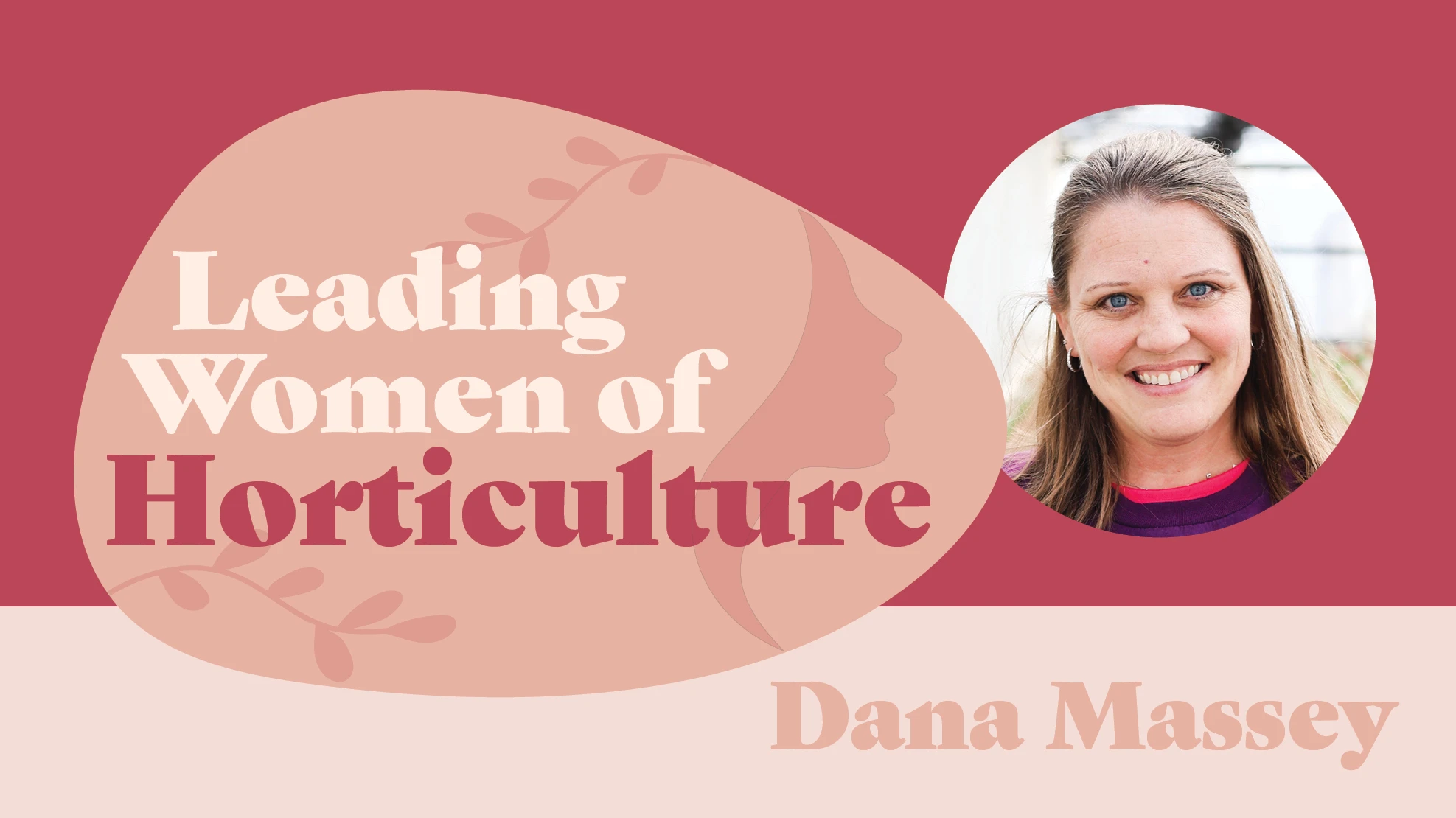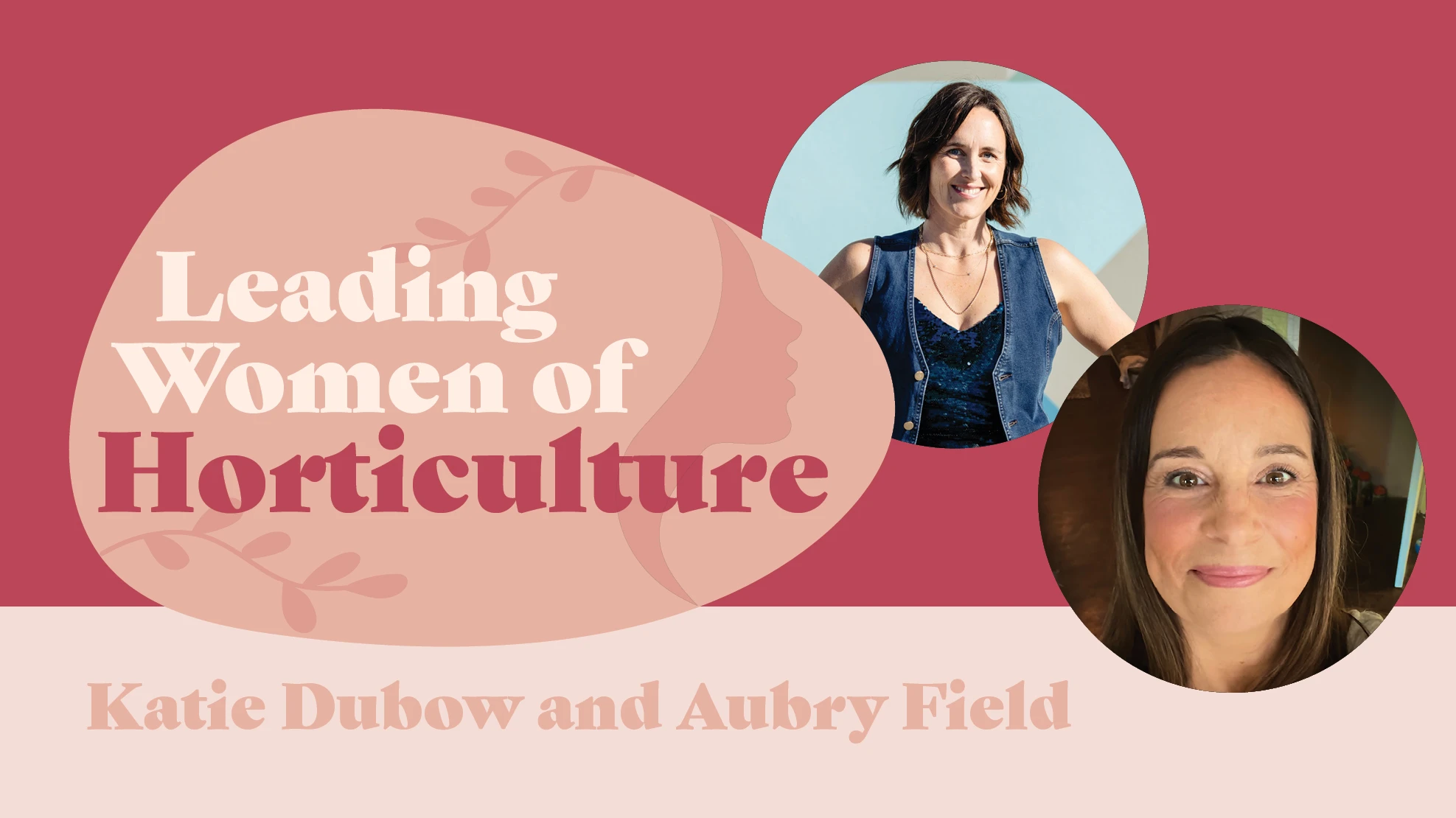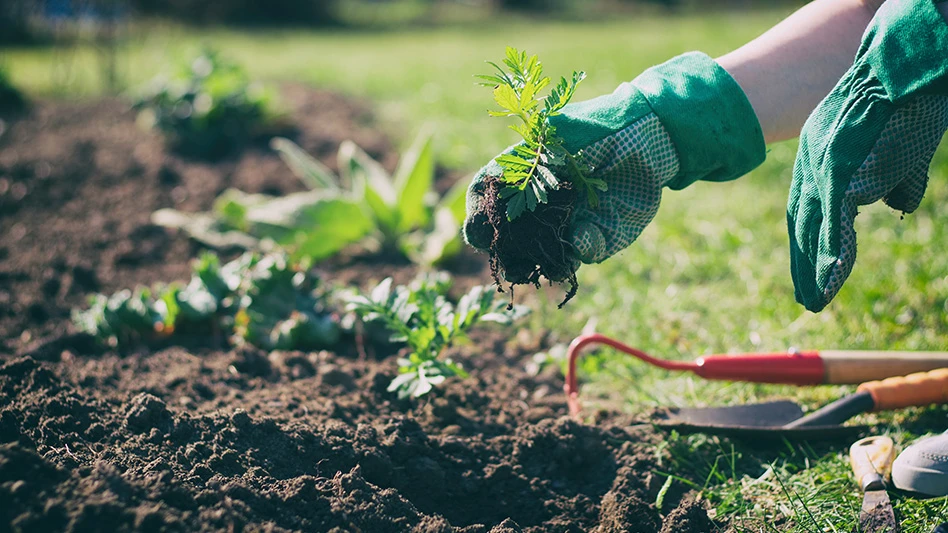
 Whether they’re red, blue, golden or purple, berries have been finding their way into an increasing number of homes in the US recently. In the last five years, berry sales in grocery stores have increased by an average of 30 percent nationally, according to a study published by Nielsen Perishables Group. But is there a way to attract those berry consumers into the garden center to buy their own berry plants?
Whether they’re red, blue, golden or purple, berries have been finding their way into an increasing number of homes in the US recently. In the last five years, berry sales in grocery stores have increased by an average of 30 percent nationally, according to a study published by Nielsen Perishables Group. But is there a way to attract those berry consumers into the garden center to buy their own berry plants?
Garden Center spoke with a number of green industry representatives, including garden center owners, breeders, growers and plant propagators, about the latest berry trends both in grocery stores and garden centers, and found that stocking berry plants can be an innovative way to draw in different customers and build your customer base in general.
Who’s buying berries at the store?
Of the consumers who purchase berries at the grocery store, 15 percent buy them on a weekly basis. In the 24 and younger category, that percentage was much higher than average; 27 percent of this age group buy berries on a weekly or more frequency. This fact was surprising to Amelie Brazelton Aust, New business development manager at Fall Creek Farm and Nursery, who has also researched the topic. She says that berry sales hadn’t seemed to be as driven by age as they were by demographic. Most berry buyers were in middle to upper income levels; the survey results represented a recent change. In other age groups surveyed, the majority of consumers only purchased berries a few times a year.
Garden centers should be aware and take advantage of these consumer trends, Aust says. “We know that last year, over half of Americans bought blueberries. That means one out of two people walking into your garden center knows blueberries, eats them and probably likes them,” she says. “So how many plants in your garden center could you say that half of the people that walk in know and have experience with?”
Living “The Berry Lifestyle”
From the informal research that Aust and her colleagues at Fall Creek have done, they have come up with a general profile for the behaviors and characteristics of regular berry consumers, appropriately dubbed “The Berry Lifestyle.”
“The Berry Lifestyle is something that we’ve come up with here [at Fall Creek Nursery] as a way to describe the berry consumers we’re seeing in the produce section,” Aust says. “People who buy berries tend to buy them on a regular basis, and they’ve incorporated them into their eating lifestyle. These people tend to care about health, prefer organic if it’s available, want local, and be active. They identify with berries, especially with blueberries. It’s almost like an ambassadorial fruit that represents the type of person they are, the type of activities they take part in.”
These consumers are significant for something more than their love of berries. Until recently, they also tended to be the same demographic that shops in garden centers, mostly women in higher income brackets, many with children.
In order to understand the recent increase in young people buying berries, Aust has taken every opportunity she's had to directly ask these young adults why they are putting the small fruits on their grocery list. Their answers have been consistent. “They list three things to me every time: easy, healthy, tastes great,” Aust says. The question remains: Have the same factors that influenced different groups of people to start buying berries also had an impact on berry plant sales in garden centers?
Berry plant sales thrive
Despite a general decrease in woody shrub and fruit tree sales over the last few years, most garden centers report that berry plant sales have continued to be strong. They cite either strawberries or blueberries as their most popular berry plant, with raspberries also ranking high. This supports the consumer survey results mentioned earlier.
Mark Bigej, chief operating officer at Al’s Garden Center in Oregon, says that because Al's began as a roadside fruit stand years ago, they’ve always considered berries to have an important place in the garden center. Now their focus is on berry plants. Over the last five years, Bigej estimates that his berry plant sales have increased by about 70 percent.
“In general, berry plants have had a great increase in volume over the last five years,” Amy VanDoren, manager of landscape design at Mahoney’s Garden Center in Massachussetts, says. “We have noticed that our customers are interested in plants from which they can harvest. We expect to be bringing berries in over a longer season and in greater numbers [next year].”
In Kalispell, Mont., blueberry and raspberry plant sales have remained strong, but other berry plant sales were static this year, says Michael Connolly, tree and shrub manager at Hooper’s Garden Center.
The growers and breeders we spoke with say their sales are also up. Duke Biscotti, sales representative at Briggs Plant Propagators, says that berry plant sales have helped to compensate for slower sales of woody shrubs like rhododendron and azaleas. “In tough economic times, people plant things that they can eat,” Biscotti says. Gé Bentvelsen, director/plant breeder at ABZ Seeds, has also noted an uptick in his strawberry business, and has seen “tremendous growth in the North American market.”

Who’s buying berry plants at garden centers?
Sales have been good, but who is the typical customer buying the plants? Two groups stand out from the rest: young people, including families with children, and experienced vegetable gardeners who want to branch out into fruits.
Bigej comments that the typical berry plant customer “used to be [in] the older, 50 plus demographic - people that had some space. But over the past five years, we’ve definitely seen younger people [including] younger married couples with kids, buying berries.” He said that he attributes this shift in part to the healthy living movement, wanting to know where your food comes from, and the fact that berries are simpler than other plants to grow, which makes them less intimidating for younger, less experienced gardeners. There are many similarities between these customers and the berry consumers following "The Berry Lifestyle."
At Magnolia Garden Center in Seattle, Wash., Owner Chuck Flaherty can’t specify just one group of customers purchasing berry plants in his store. “It’s pretty widespread at this point. Raspberries and some of the more exotic berries certainly appeal more to the do-it-yourself type of person,” Flaherty says. “We sell a fair amount of blueberries, and those seem to appeal to just about everybody. We have a lot of people with kids [who] like to do the berry plants. It seems to be a family planting activity for a lot of families.”
Connolly also finds it difficult to clearly define who's buying berries at Hooper’s. "I think it’d be easier to describe the demographic that is the least likely to purchase them - people over the age of 60,” he says.
It’s not all about the money
Most garden center owners and employees we spoke with said that berry plants represented a very small percentage of their total green goods sales, especially in comparison to other shrubs and edibles. Is it worth the time and effort to stock them?
Even though the profits earned from the sale of these plants may not bring in the same revenue as other annuals, those who sell berry plants find it to be a worthwhile inclusion in their green goods section.
Rounding out your selection. Ella Maxwell, horticulturalist at Hoerr Nursery in Peoria, Ill. says that they continue to stock berry plants as part of their $4 million operation with their customers’ needs in mind. Stocking berry plants “rounds us out,” she says. “They’re popular and have a place. They’re not going to break or make our business, but we pride ourselves on being a fully stocked garden center.”
“Garden centers are looking for an edge to remain relevant to their customer base,” says Tim Kane, sales and marketing manager for Prides Corner Farms in Lebanon, Conn., and former garden center manager. “Food ... does that anytime, so these berry plants are an important part of garden centers’ mix.”
Bringing in the younger crowd. Maxwell also sees the benefits of carrying a product that appeals to Generations X and Y, age groups that garden centers struggle to attract into the store. “We’re having trouble capturing the younger market, so we want to offer something that they’re interested in,” Maxwell says. “A lot of [younger] people are interested in growing their own and think it’s cool.” VanDoren says that “We’re finding that berries are something that will, particularly for the young family, bring people who wouldn’t necessarily come into the garden center.”
Many of these customers are also concerned with eating healthy and consuming organic food. Blueberries have been shown to complement a healthy lifestyle with their antioxidant properties. And getting kids to eat berries isn’t hard because of their sweet flavor and kid-friendly size. “Who doesn’t like berries? Especially fresh ones right at your fingertips,” Thomas Fetch, sales manager for L.E. Cooke, says.
“I think edibles are here to stay if independent garden centers and consumers position them as part of their wellness program,” says Nicholas Staddon, director of new plant introductions at Monrovia. “IGCs have a responsibility to position the fruit program as something special.”
In addition, bringing in these young mothers can be great for the garden center’s bottom line, even if the results aren’t immediate. “Children who grow up eating berries are seeking it on their own when they leave the home,” Aust says. “If we can get moms and families to plant blueberries, and get their young kids involved, we’re going to get young kids off the couch and into the garden through their stomach, and make gardeners for life.”
Locally grown for all ages. Kane sees homegrown berries as part of the locally grown movement, which is increasingly popular with younger people. “The locally grown [movement], in my mind, crosses generational lines,” he says. “It’s more important with the younger people, in my mind, than to older people. I think that’s one way to make you relevant to that age group.”
Not just a fruit. Berry plants are certainly a value added product. They can satisfy diverse needs that the customers might have. Those looking for a landscape shrub can plant a blueberry bush, rather than the typical boxwood. Breeders have been developing different varieties with colorful foliage that can be an attractive addition to customers’ yards. “We sell the blueberries as a foundation shrub,” Maxwell says. “You can get fruit and you can also have a pretty plant.” Since many customers may not be familiar with these new varieties, it is up to the garden center staff to educate customers. The shrubs may even help motivate customers to redo their landscaping, once they see all of the advantages to planting berry bushes.

Create enticing displays
Creating an effective display is as important for berries as it is for other plants in your store, especially if you hope to attract the younger crowd. Garden centers should keep in mind the special needs that this group has. “They’ll spend the money, but they want it [to be] easy and convenient,” Aust says. “That tells me compact is better, and that easy 1-2-3 combo display in the store for potted blueberries or potted raspberries could be interesting.”
She stresses that displays should be simple enough so that the customer can make one stop and get everything they need, considering many won’t have ever planted berries before. “Have the pot display, the media and the soil that’s perfect for blueberries or raspberries, and then the plant, so that they can just easily grab all three and go,” Aust says. Staddon suggests placing them in a high-trafficked area and not necessarily at the very front of the store.
However, as with any item, there is no single “correct” location for your berry plant displays. Most of the garden centers that we spoke with agreed that there is value in mixing things up and displaying berries in other places besides with the fruit trees or shrubs, especially considering their unique appeal as an edible shrub.
At Mahoney’s, berry plants are displayed in several different areas, including in the tree and shrub area, farm stand and with other edibles in the annuals yard. “I think that from a standpoint of putting the things in the nursery, one of the considerations is that these are often used as shrubs, blueberries in particular, because aside from the food value, they are a terrific ornamental,” VanDoren says. “They have multi-season interest, [and] attract birds and wildlife, so that’s something that is a component of the thinking that our consumers have. When we get to the farm stand, it’s a reminder of where these fruits have come from. So if you wanted to grow them yourselves, here you are.”
At Al’s Garden Center, all berry plants are displayed in the edibles section. “We make an edibles area that contains all of our vegetables,” Bigej says. “We [also] keep our berries in that area, on tables under cover in the greenhouse portion, next to an area that also has all of our fruit trees.”
Other garden centers have found value in moving the product as the season progresses. “In the spring, we display the plants right on our front walk so as people come into the garden center area, they have to walk by them. Then, sometime in June, we switch them into our back display areas with deciduous shrubs,” Connolly says. “We’re pretty much a firm believer that you have to switch things around every once in a while or people stop seeing them.”
Get the word out
When it comes to berries, sometimes the biggest challenge can be that customers don’t know you carry them. Once they’re in the store, it’s much simpler to explain the benefits of planting one of the shrubs. But they need to be enticed into the store first. Here are some of the ways that garden centers are spreading the word about berries.
Magazines or newsletters. You can get customers thinking about berries early on through your in-store magazine or email newsletters. “We have our own magazine, and in the early spring issues, we’ll talk about berries. We might highlight strawberries or blueberries, but we’ll talk about them along with the other edibles,” Bigej says. “We try to get the varieties out there, teach people how to grow them, and let them know how easy it is.”
Website. Magnolia Garden Center has found success with marketing berries on their website. “Our website really has a big area dedicated to blueberries in particular,” Flaherty says. Some of their business comes from people who have found them online through search engines, although most of their customers are still local.
POP materials. Take advantage of the POP materials that many growers offer along with their product. Many have researched the best ways to sell them to the final consumer, and have incorporated that information into their marketing tools.
 Training salespeople. Maxwell has grown most of the berry plants that Hoerr carries at her home. “It makes you a good, well-rounded salesperson if you have experience with all of the plant material,” she says.
Training salespeople. Maxwell has grown most of the berry plants that Hoerr carries at her home. “It makes you a good, well-rounded salesperson if you have experience with all of the plant material,” she says.
Aust suggests dedicating some time to educate your salespeople about the different berry plants so they can pass along the information to the customer. “Anytime anybody wants a landscape plant, [have salespeople] take them over to the blueberries,” Aust says. Emphasize that it’s beautiful in the landscape during all four seasons, has great fruit in the summer, is perennial and is easy to take care of.
Make the movement last
“People ask me that a lot about berries or edibles in general, ‘is this just a fad?’ My answer is that’s up to us because right now, berry consumption is going nowhere but up,” Aust says. “We as an industry [need to] make varieties and plant products that are easy, convenient, healthy and [have] great flavor. It's a movement that will last a long time and it’s up to us to make sure that our berry products fit those needs.”
Whether your garden center stocks just the basic strawberry, blueberry and raspberry plants, or carries an extended selection of more “exotic” berries, these plants are a great addition to your green goods section.

Explore the November 2012 Issue
Check out more from this issue and find your next story to read.
Latest from Garden Center
- Brand Spotlight: Growing Sweet Success in Small Spaces with Butterfly Candy™ Buddleia
- Super Charged Moon Juice from Moon Valley Nurseries now available nationally
- 2025 Proven Winners Horticulture Scholarship applications now open
- Leading Women of Horticulture: Anna Ball, Ball Hort, and Terri McEnaney, Bailey Nurseries
- Dümmen Orange North America celebrating 25th anniversary in 2025
- Illinois Landscape Contractors Association changes name to Landscape Illinois
- Leading Women of Horticulture: Arden Pontasch, North Creek Nurseries
- Spring Meadow Nursery's Freedom Shelley finds joy in plants






